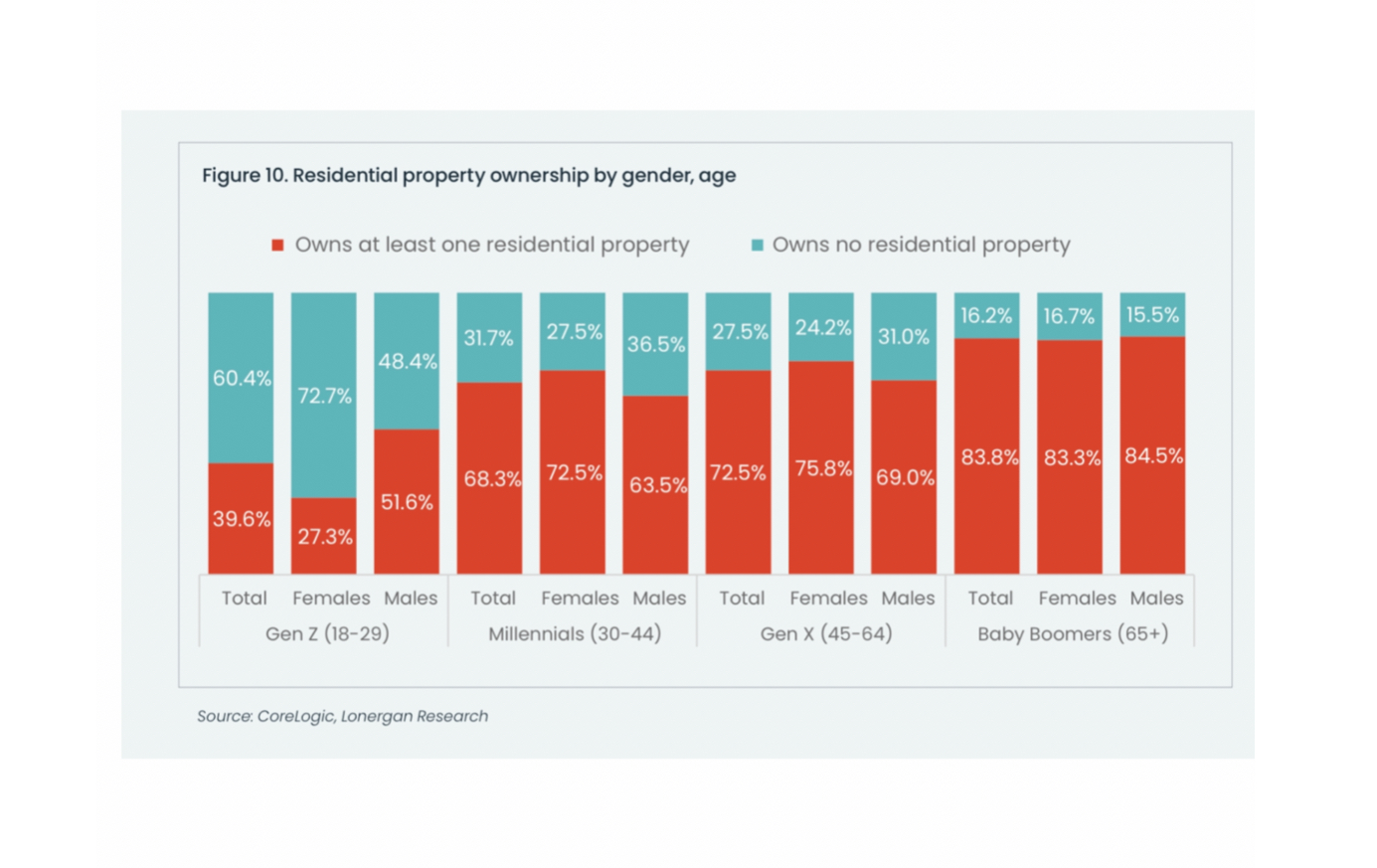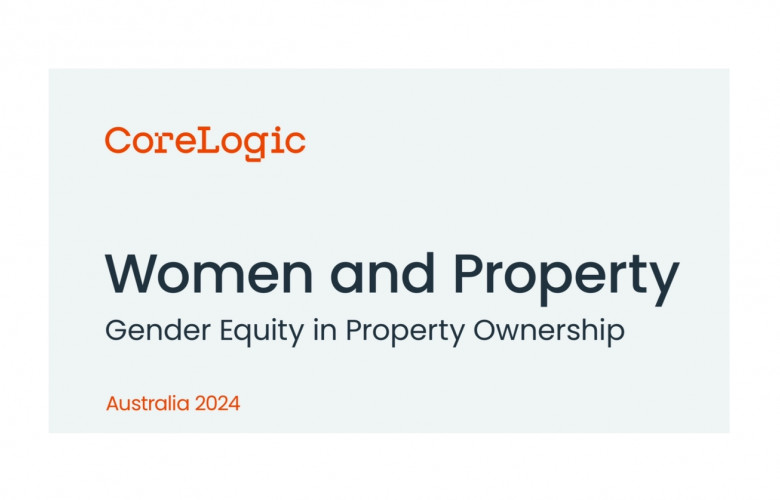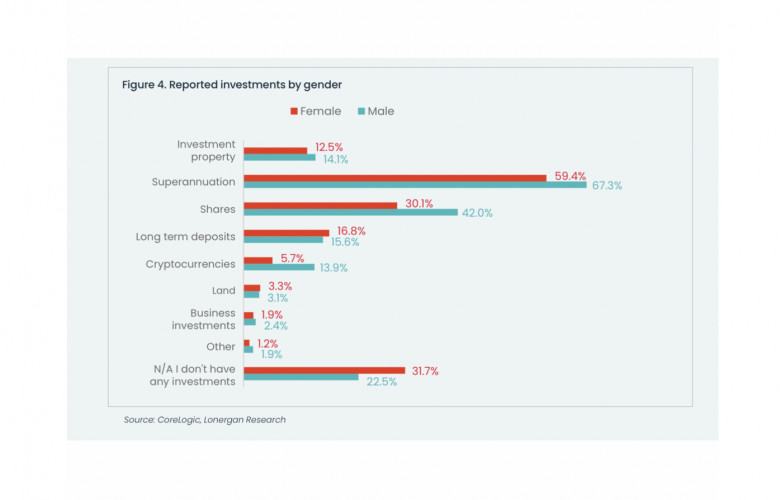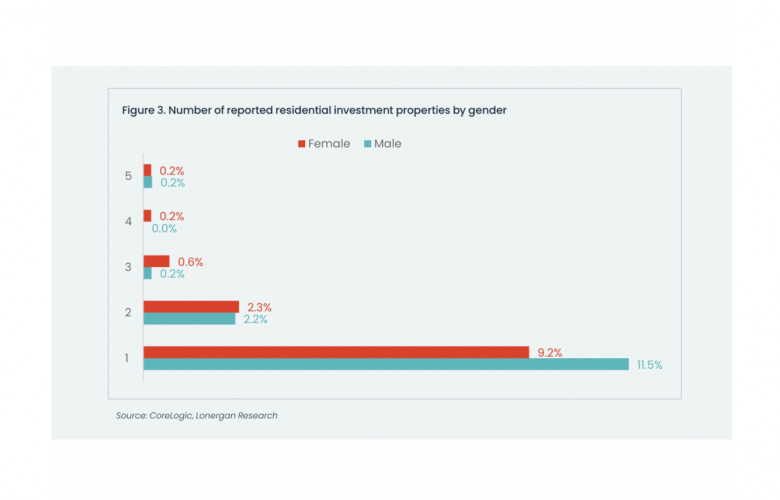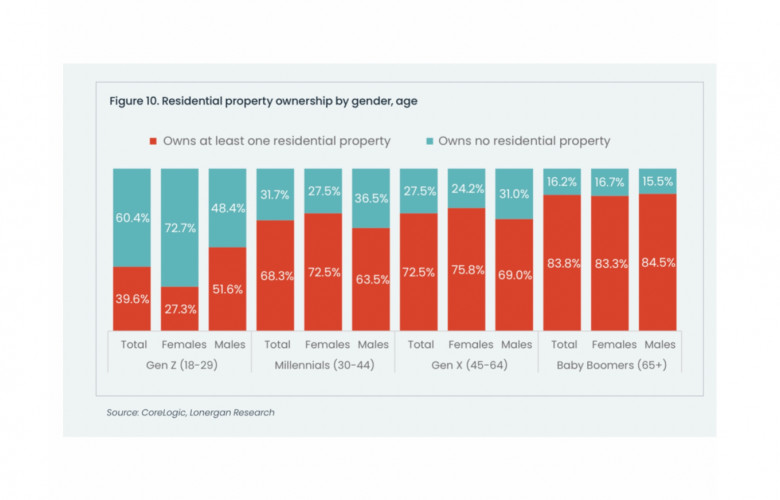Property a priority for Gen Z women but affordability and investment major hurdles
Contact
Property a priority for Gen Z women but affordability and investment major hurdles
CoreLogic's 2024 Women & Property report, which surveyed home ownership status and motivations, barriers and attitudes towards dwelling ownership among women and men in Australia, reveals that 68.2% of women surveyed own at least one property.
CoreLogic's 2024 Women & Property report, which surveyed home ownership status and motivations, barriers and attitudes towards dwelling ownership among women and men in Australia, reveals that 68.2% of women surveyed own at least one property - including owner occupied and investment properties - slightly higher than men at 67.4%.
However, women are more likely to own residential property with someone else (53.3%, compared to 51.9% for males), while men have a higher rate of sole ownership (51.9%, compared to 50.2% for females)[1].
CoreLogic head of research and report author Eliza Owen said the updated survey methodology had provided more insights into some of the nuances of home ownership.
“Examining home ownership holistically unveils gender equity gaps, highlights generational risks, and underscores the critical role of residential real estate in wealth, retirement, and tenure stability. It prompts crucial questions about the accessibility of property ownership for women across generations and the challenges faced for early entry into the market.”
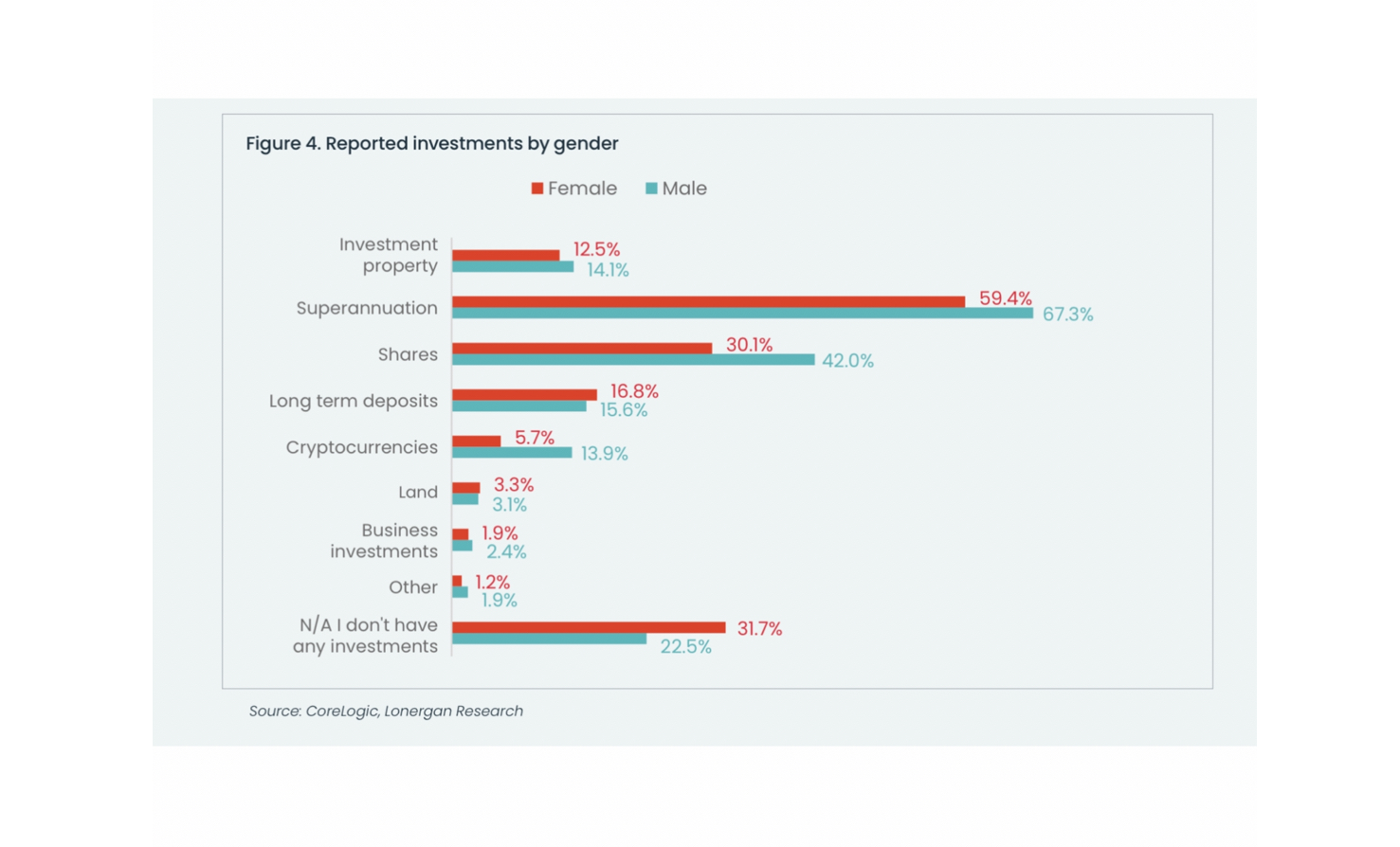
Young women and the ownership gap
A notably higher share of males aged 18-29 (Gen Z) reported owning at least one dwelling (51.6%) relative to women in the same age group (27.3%), with the survey revealing that Gen Z women overall had lower levels of income ($67.8k versus male $83.5k per year before tax), and greater levels of part-time and casual employment (32.9% versus male 12.9%).
Dwelling ownership increases with age, with the portion of Millennial Women (aged 30-44) who own at least one dwelling increasing to 72.5% (versus 63.5% men), Gen X to 75.8% (versus 69.0% men) and Baby Boomers at the highest rate of property ownership at 83.3% (versus 84.5% men).
Ms Owen said given the importance of residential real estate, it was reassuring to see home ownership rates between men and women even out over time.
However, she said the survey findings also raised some important questions about the timing of home ownership and some of the barriers confronting a purchasing decision.
“Presumably the gender-based home ownership gap closes in part due to the formation of couples and family households, so while the pay gap between men and women becomes less important for mixed-gender couples, it may pose potential risks during relationship breakdowns,” she said.
“Further, if men can attain dwelling ownership at a younger age, they are likely to benefit from greater levels of capital growth from the asset class over the long term.”

Bridging the investment gap
Residential investments skewed towards men, with 14.1% reporting owning a least one residential investment property, compared to 12.5% of women.
Ms Owen said this was a trend which extends to almost every asset class nominated in the survey, with the biggest gap in shares, which showed a 12-percentage point disparity between men and women (30.1% for females versus 42.0% for men).
“This gap may be tied to differences in income between men and women, but it may also reflect differences in exposure to financial concepts through education,” she said.
"Greater intervention at the high school and university level to familiarise young females with concepts of economics, finance and investment may help to bridge the investment gap, not just across property, but a range of asset classes.”
Implications of findings
Home ownership constitutes 56.7% of household wealth in Australia and is a proven source of wealth and security and a vital part of a comfortable retirement, Ms Owen said.
While high-level data shows a promising parity between males and females of dwelling ownership in Australia, there were discrepancies and more work to be done to empower women with respect to dwelling ownership and investment.
“Accessibility to home ownership varies, with younger, low-income households experiencing a prominent decline, and gender-related challenges persisting, exacerbated by the gender wage gap,” Ms Owen said.
“Despite overall dwelling ownership parity, this year’s survey reveals that affordability constraints and the home-buying process pose significant challenges for a higher share of females, emphasizing the need for targeted solutions to address gender disparities in Australian home ownership.”
Key findings of CoreLogic’s 2024 Women & Property report
Dwelling ownership rates:
-
- Overall females (68.2%) had slightly higher ownership rates than males (67.4%).
- Joint ownership is more common among females (53.3%) than males (51.9%), posing potential risks during relationship breakdowns.
- More than four out of five (81.8%) of co-owned properties by females were owned with a husband or male partner, and 14.5% were owned with a wife or female partner. For males, 79.8% of properties were owned with a wife or female partner, and 13.4% were owned with a male partner. This meant slightly more than one in eight joint home and property owners co-owned a property with a same sex partner (13.9%).
- Across all age groups, males have a higher rate of sole ownership of property (51.9%) compared to females (50.2%).
Estimated value of properties and outstanding debt levels
-
- The average property value among females was $1,046,547; slightly lower than the average reported by males ($1,071,912). Meanwhile, the average female housing debt was $256,541, compared to $237,230 for men. This meant that the average overall home equity position of survey respondents was about -5.4% less for women.
Gender dynamics in Gen Z (age 18-29):
-
- Gen Z males have a significantly higher home ownership rate (51.6%) than their female counterparts (27.3%). This is despite Gen Z women placing greater importance on home ownership (51.0%) than Gen Z men (43.2%).
- For non-property owners affordability constraints was rated as the biggest barrier delaying young women's entry into the property market (61.4%), whereas the most common reason for Gen Z men was that they were not ready or looking to buy yet (44.3%).
- Gen Z women overall had lower average levels of income ($67,823, versus $83,468 males), and greater levels of part-time and casual employment (32.9%, versus 12.9% males).
Residential investment disparities:
-
- 14.1% of males own at least one residential investment property compared to 12.5% of women. Those that reported holding at least one residential property investment had a 93.5% rate of owning an investment in another asset class, compared to 62.3% of those that did not own investment property.
- Property investment aside, men also maintain a higher share of investment across other asset classes (77.5%, versus 68.3% women), with the biggest gap being in shares (women 30.1% versus 42.0% for men).
Ownership by property type:
-
- Of the properties owned by women, 69.2% were houses, compared to 64.0% of properties owned by men, while males owned a higher share of units (22.6%, compared with 18.3% for women). This could relate to males' higher portion of investments, as investor purchases are more commonly units.
Importance of residential real estate:
-
- Females placed a higher rating of importance on home ownership (75.4% rated property ownership with high importance vs 66.0% for males).
- Overall Australians ranked financial stability (45.5%) and the stability of living arrangement (44.8%) as the two most popular motivations for buying property.
To download a copy of the CoreLogic 2024 Women & Property report, visit www.corelogic.com.au/news-research/reports/women-and-property-2024.
